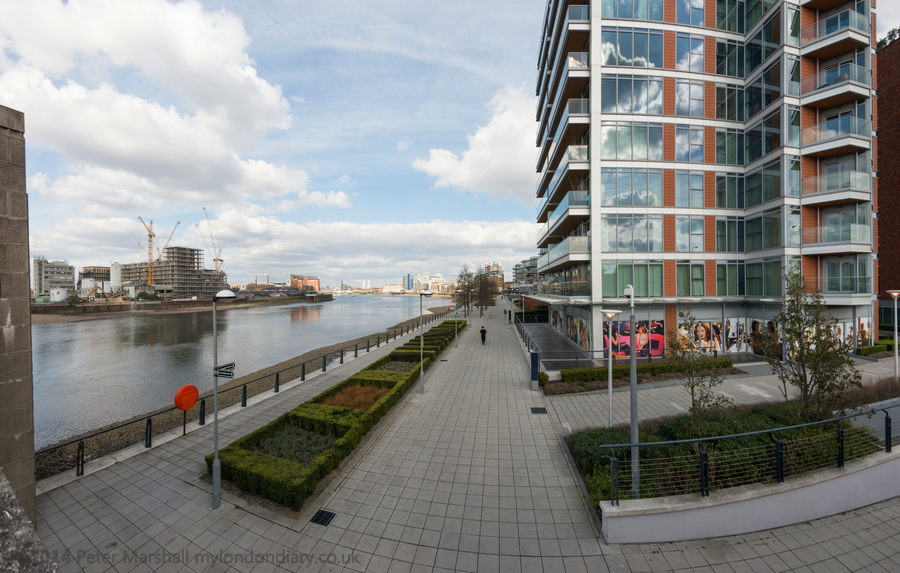
Wandsworth is just along the Thames from Battersea, where Britain’s finest painter, J M W Turner spent a great deal of time in his later years painting the skies from a small room above the porch of St Mary’s church, as I mentioned in an earlier post. That church, a mile away, is just visible in centre of the full-size version of the image above, though impossible to see in the reduced image.
Years ago, Turner would get a mentioned in my lessons about landscape photography, and I used some of this material in a piece I wrote about the Turner prize on show at Tate Britain a mile or two further downstream.
‘John Mallord William Turner (1775-1851) was the son of a London barber. His mother died in his infancy and he was brought up by his father, who taught him to read but little else. Turner early showed a gift for art and at the age of 15 was admitted to the Royal Academy school; within a year he had a painting accepted for their exhibition. As well as his fine work in oils, Turner was the master of the watercolour sketch and is often considered the father of watercolour painting.
Landscape photographers can learn much from a study of Turner’s work – and that of his contemporary, John Constable (1776-1837), in particular for the close attention both paid to the weather and clouds in their work. Constable started to paint great landscapes with clouds in his native Suffolk and continued after he moved to London. Turner recalled that, ‘as a boy, I used to lie for hours on my back watching the skies, and then go home and paint them; and there was a stall in Soho Bazaar where they sold drawing materials, and they used to buy my skies. They gave me 1s6d for the small ones and 3s6d for the larger ones.’
This was an age of great interest in natural phenomena, and at the very time that Turner was on his back gazing into the heavens, scientists were also making their observations. In France, Jean Baptiste Lamarck proposed the first classification of clouds in 1801, but it was nearer to hand in east London that the Quaker factory owner Luke Howard took time from chemical manufacture to make the detailed daily studies. Larmarck’s proposals sank without trace, but Howard’s ‘cumulus’, ‘stratus’ and ‘cirrus’ presented in his 1802 paper ‘On the Modification of Clouds’ form the basis of our current system of classification. It is a subject that should be dear to the heart of all landscape photographers.
Turner first read Howard’s work almost 20 years later and was inspired by it to paint a fine series of cloud studies. Turner was – even by photographic standards – a prolific worker, and at his death left some 19,000 works to the British Nation. These works form one of the basic collections of the Tate Gallery – now called ‘Tate Britain’ – in London, which houses the largest collection of his paintings, drawings and watercolours, many on display and some reproduced in the on-line catalogue.’
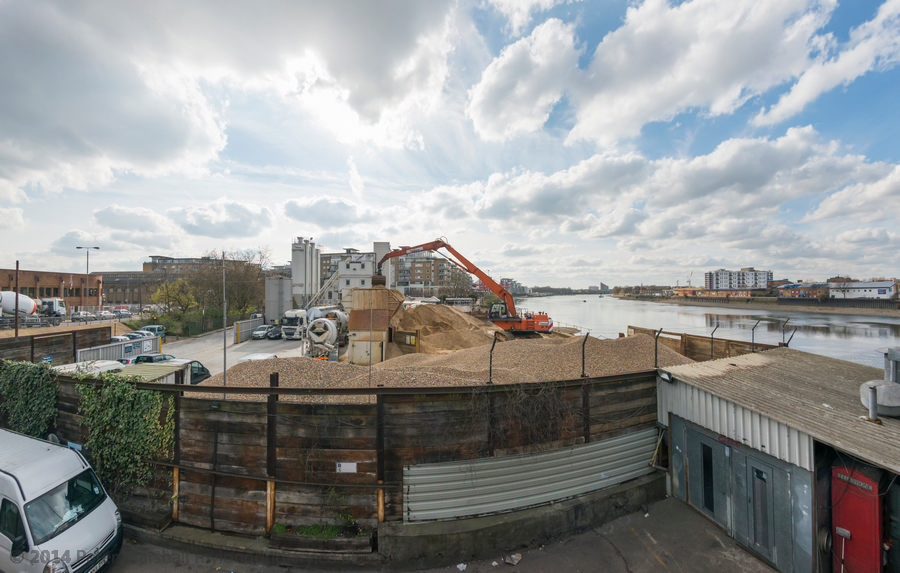
Battersea started on the road to gentrification years ago, and large stretches of its main streets are now solely occupied by estate agents, profiting excessively from what appears to be the UK’s only growth industry, the rise in house prices. Battersea has more of a cachet than Wandsworth, which used to be largely industrial, with gas works, brewery and more and is spreading rather so far as the property descriptions are concerned. So while the flats at the top of this post are in Wandsworth (and for almost six months the site of the Pure Genius ‘Wandsworth Eco Village‘) they are ‘Battersea Reach’. The gas works and brewery and its Shire horses at the centre of Wandsworth are now in the past, but there is still some industry, with sand and gravel from the estuary being loaded onto lorries and London’s rubbish being taken on barges in the opposite direction from a large riverside waste-transfer station. Though it must surely be only a matter of time before all these are replaces by investment flats for the Chinese and Arab oil money.
I was there to take photographs, but also and appropriately to show the area to a friend of mine who is a fine watercolourist, though today she was only making sketches. Even so it gave me plenty of time to reflect on the scenes and the fine clouds. When you images cover a horizontal angle of 146 degrees and the sky is often almost half the image, you really need a few clouds. Clear blue skies are boring and also something of a photographic problem, as the differences in intensity over that wide sweep can be extreme. It’s possible of course to ‘dodge’ and ‘burn’ – or at least their digital equivalents – to even things out a little, but pretty tricky to do so entirely evenly and without any obvious tonal steps.
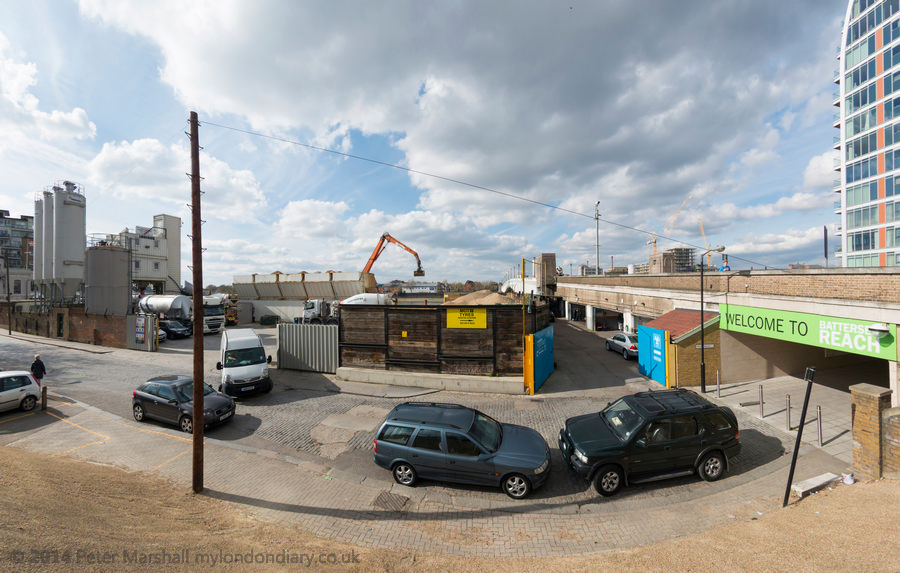
I’m still not entirely sure about the projection to use for these images, but think I have standardised on that in use here, though I may decide to work to a more panoramic format, though at around 1.57:1 these fit rather well on a wide-angle screen (the one I use is 1.6:1).
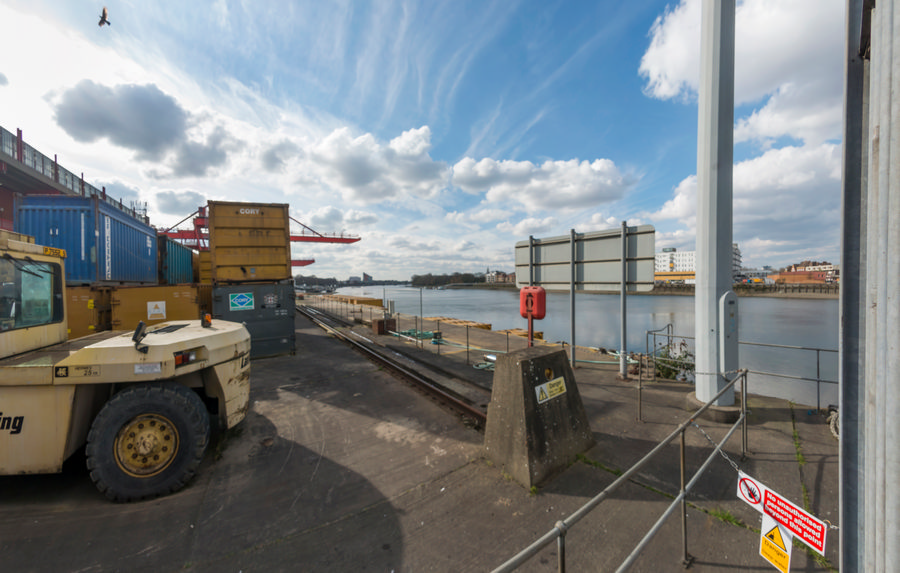
The sun was just outside the top left corner of this image, and in some others was actually inside the frame. Although the Nikon 16mm is remarkably resistant to flare, there was a little which required some corrective work. As well as burning in the sky and the clouds, the railings along the top of the waste-transfer station needed some attention, with an increase in contrast and saturation along with a decrease in exposure to make the flare less noticeable.
I hung around for quite a while hoping for a cloud to shade the sun, but it didn’t happen and I finally gave up. But had it done so the image would have lost the light and shade which I think are essential.
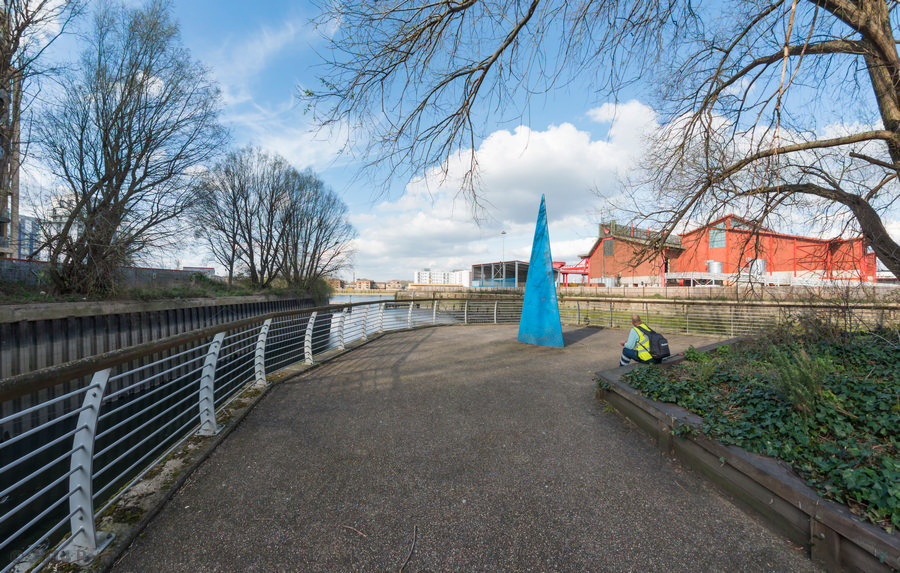
A little further on we came to the spit between the two streams of the mouth of the Wandle. I’m still wasn’t quite sure that I’ve managed to capture what I wanted at this point, but but we were beginning to get a little cold and didn’t stay too long before making our way back to The Ship, a rather fine riverside pub close to Wandsworth Bridge.
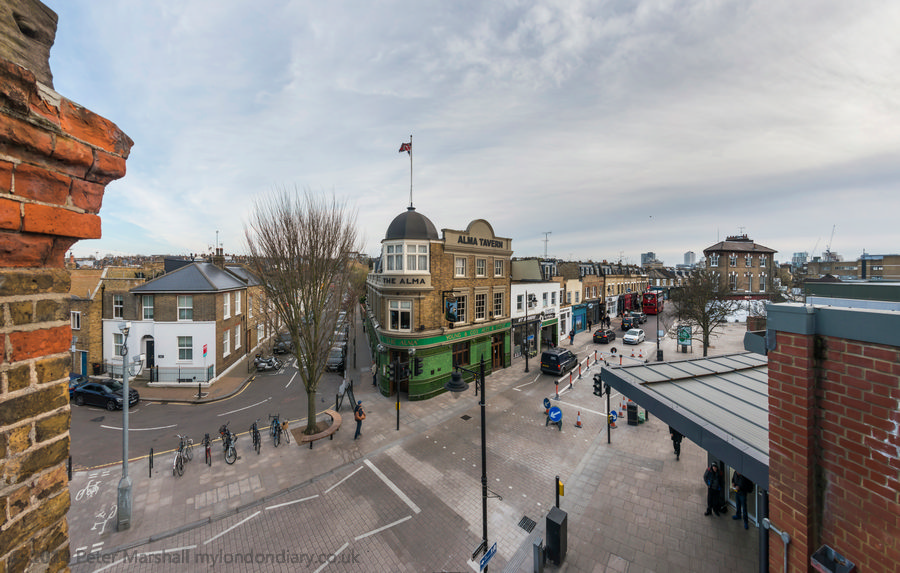
After I’d taken my friend back to the station I had 25 minutes to wait for my own train and decided to take a few more pictures, getting back with just a few minutes to spare so I could go up onto the wrong platform and photograph the scene over the wall looking out on part of Wandsworth. It’s a street that has gone considerably up-market over the past 20 years, with general stores being turned into art galleries (where I went for an opening last year) and more.
______________________________________________________
My London Diary : Buildings of London : River Lea/Lee Valley : London’s Industrial Heritage
All photographs on this and my other sites, unless otherwise stated, are taken by and copyright of Peter Marshall, and are available for reproduction or can be bought as prints.
To order prints or reproduce images
________________________________________________________